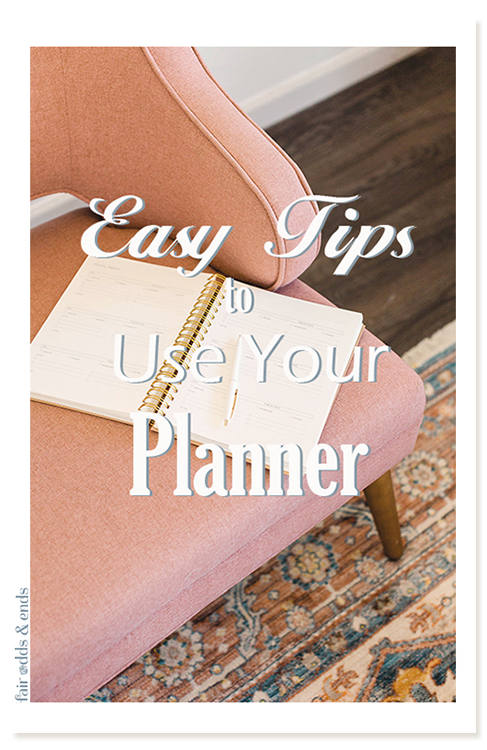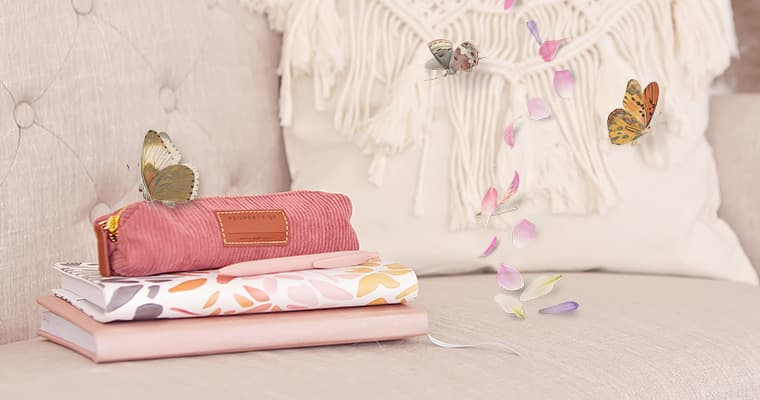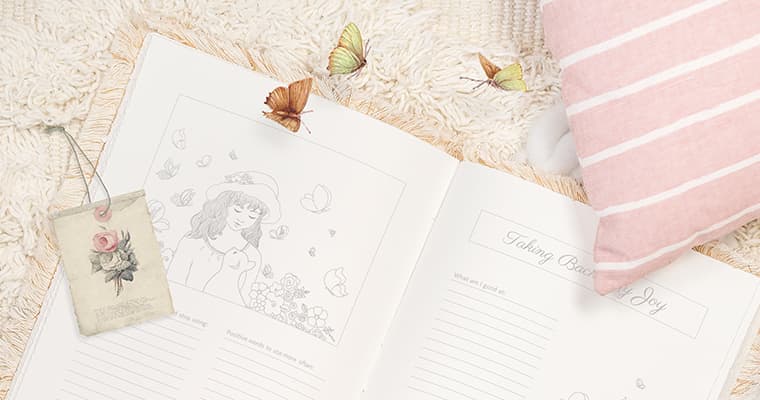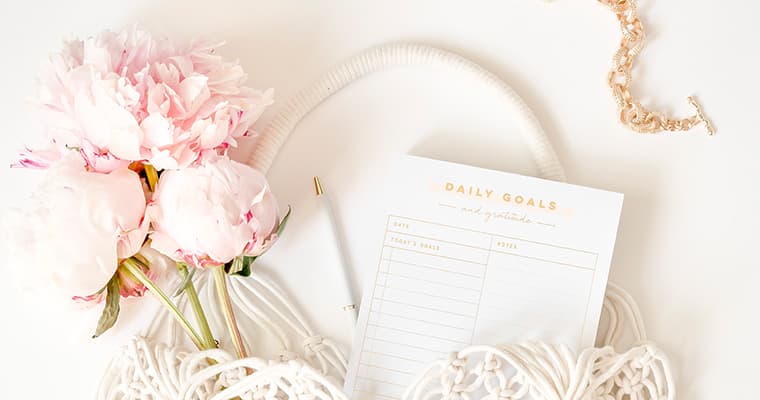Why Everyone Should Use a Planner
You might be aware of the basics about using a daily planner, but have still not discovered the many benefits. Take a look at the reasons why everyone – including you – should start using a life planner.

It Helps with Time Management
Do you find that there is never enough time for everything? If so, it is probably because you are not scheduling your time effectively. This happens when you just run constantly, going from one thing to the next, without really thinking about everything as a whole. Using a planner allows you to schedule each event, appointment, errand, and task, so that you know what to expect and don’t run out of time. Set specific due dates and deadlines for everything to help you stay on track, and have extra time left for yourself and your family.
You Can Improve Your Productivity
Many people think of productivity as relating to their job, but you also want to be productive at home. This might include getting cleaning and home organization done, or working on projects that you keep putting it off. Regardless of what it is, planners help you stay on track with each individual task you need to complete, and encourages you to move on to the next one effectively and efficiently.
They Provide Excellent Stress Relief
Overwhelm is usually at the heart of stress. You are often stressed due to having too many demands, a hectic schedule, or just putting too much on your plate. Outside influences also affect your stress level, but think of how different it could be when you actually have time for everything and are able to seamlessly go from one responsibility to the next without having to worry about missing something, being late, or having to back out at the last minute.
There are a Multitude of Health Benefits
Planners help you stay healthy in a wide range of ways by helping you track things like diet and exercise, you can schedule regular doctor and dentist appointments, and make sure you are getting enough fresh air and vitamin D by scheduling days spent outdoors. You get mental health benefits by reducing stress and anxiety, and also having journaling pages for when you just need a good brain dump.
More Time for Creative Activities
Another benefit of using a planner is that because you are sticking to a schedule for all the mandatory responsibilities, it leaves a little free time for your artistic endeavors, whether that means working on a hobby or trying something new.
How to Add Your Planner to Your Daily Routine
A daily routine is a great way to focus your mind on one thing, saving time, and set yourself up for a productive day. If you want to use a planner, why not add it to your daily morning or evening routine?
Create a Regular Routine
Start by figuring out your daily routine and how to add using your planner to that routine. Do you find that you sit at your kitchen table in the morning with a cup of coffee, and have a few minutes of quiet time? If so, this is a great time to start a daily routine where you write in the planner, and maybe your journal as well. For others, they prefer it to be during their lunch break at work, or maybe in the evening before bed to mentally prepare for the next day. There are no rules here except consistency.
Be Consistent
This is why creating a daily routine with using your planner is so vital. Add it to your schedule, then you know what to expect, and you won’t keep putting it off for the “right time”. Think of it like any other part of your routine, like taking a shower or cooking a meal. Write in your planner around the same time every day, and it easily becomes a daily routine.
Fit it Into Your Normal Lifestyle
Be realistic about using your planner daily. You might like the idea of a morning planner and journal session, but if you already struggle getting to work on time, this isn’t realistic. Instead, think of a time during the day when you do have a spare minute, or where you can move things around in your current routine. You know your life best, so work with your current lifestyle and schedule.
Keep it Simple
This probably won’t be the last time you hear this advice – keep it simple! If you are just starting your own planner and struggling to use it every day, don’t bother trying to turn it into an ordeal. You don’t need a bullet journal or a planner with 500 pages just to be effective. Have 5-10 pages to start with, then when those pages fill up or you get new ideas, gradually add in more to your planner.
Use a Planner You Love
Using a planner you absolutely love that works best for you will encourage you to use it. You will be excited about opening it up every day. One more thing to note – it is best to use just one planner for everything. You might use a printable planner which you keep in a file and add whichever pages you need. You will avoid any confusion with different planners all needing to be used each day.
6 Different Types of Planners You Can Use
In the world of planners, there seems to be an endless amount of information and tips. Even just the types of planners don’t have just one option. If you’re a little stuck with how to begin, take a look at these different types of planners you can have.
1. Personal/Daily
The first type is the main type of planner, which is one that is for all daily planning, with emphasis on personal. Many people use their daily planner for everything, including work and other areas of their life, which is definitely encouraged! This keeps you from having too many planners all over the place, causing too much chaos. However, others fill up a work planner very quickly, and need additional room, so that is where the personal planner comes in.
2. Home and Family
If you prefer using different planners, you might want a separate one just for home and family planning. This is good for keeping track of doctor and dentist appointments, scheduling important dates for the kids, planning date nights with your spouse, and even doing some meal planning. With a busy home life, you can definitely fill up an entire planner just for this purpose.
3. Finance and Budget
For people who are working on saving money for something big, trying to save for retirement, or just want better control of their finances, this is a great planner to have. Here are some things you might want to track in a finance and budget planner:
Money coming in and going out
Bills and debt
Regular expenses
Savings for specific goals
General savings
Building your investment portfolio
Setting a budget
4. Bullet Journal
If you like using a bullet journal, you can definitely use it as your planner as well. Many people do use it for both, since you have plenty of calendar and schedule places included. With a bullet journal, you are in full control of each page, whether you set it up yourself with pen and ruler, or you get printable pages to add to a binder that is being used as your bullet journal.
5. Work Projects
If you are a project manager or run your own business, you might be in need of a planner just for work and various projects you are managing. This keeps everything organized and in one place, so that you don’t have computer files, notebooks, and journals everywhere that is filled with random notes.
6. Health, Diet, and Fitness
There is also the health planner that you can use just for things like diet, tracking weight loss or inches, fitness routines, and just general health and wellness information.
Tips for Setting Up Your Planner
After you have purchased your planner, the first thing you need to do is set it up. Here is a quick guide to doing this efficiently, while also keeping the process simple.
Gather Your Tools and Supplies
The first step to setting up your planner is to gather everything you need. Aside from your planner and any printable pages you are adding to it, you will need something to write with.
If you are color coding, using some colored pens is a great tool to have, but this isn’t necessary.
Some other tools you may need include:
File (if using printable pages)
Ruler (for custom pages)
3-Hole Punch (for printed pages)
Stickers or embellishments
Highlighters (for color coding)
There may be some other accessories you need, but these are the basics to grab for now. When you start working on different pages, you will decide then if more needs to be used.
Decide What to Track and Where
Next is to decide what you are tracking in your planner, if you haven’t made this decision already. This is often something you will think on before you even buy your planner, but it is good to make notes of the main areas of the planner you want to use.
Perhaps you just want to use the monthly and weekly calendar pages for now, or you might want to use it for home or work projects, or setting goals, so you would like pages for listing to-do lists and task lists.
Use the Monthly Calendar First
Now that you are ready to write in the planner and start setting it up, always start with the monthly calendar for the current month. It is good to start with birthdays and anniversaries, since those are pretty straightforward. You can then start adding in other events or appointments you already know about.
You may add more to the monthly calendar later, but all you need for now are the basics. Fill out as many of the monthly calendars as you want, or you can just stick to this month to keep it simple.
Make a List of Goals and Tasks
It is good to make a list of any goals or tasks that need to be done this month before working on the weekly schedule pages. This can be added to the monthly calendar, followed by more details added to the weekly schedule. For example, if you have a goal to finish school shopping for your kids by the end of September, then you will probably have tasks like setting a budget, finding sales, hitting certain stores, things like that. This makes it easier and less overwhelming for you.
Add More Details to Your Weekly Schedule
Now it is time to set up the weekly section of the planner. Use your monthly calendar to plan out what needs to be done each week, and on which day. The weekly pages usually have larger sections for each day of the week so that you have enough room to write down details like to-do lists for completing certain tasks, or things you need before an appointment or event.
By now, you have completed the main part of the planner. You can decide to stop there, or continue with other details. You might want to do some color-coding, or add additional pages for other productivity requirements you have.
Have fun planning!



